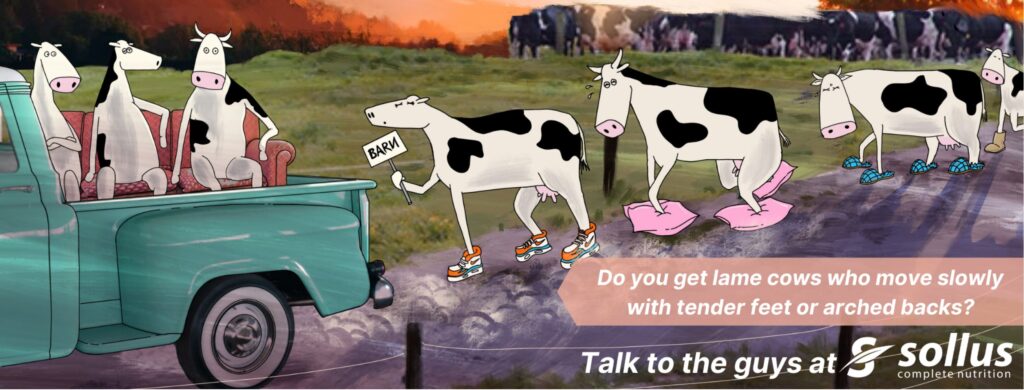
Lameness in dairy cows is a multi-faceted problem. It is also highly misleading, often the occurrence of lame cows is not directly associated with the cause – resulting in further confusion.
The team at Sollus put together the 3 R’s of lameness prevention. Management of these R’s is critical for success.
- Races
- Rest
- Ration
The quality of races in NZ is second to none. There is a fantastic focus on this area in NZ. To summarise: they need to be dry, firm, smooth, wide and with little to no impediments likely to cause bunching within the herd. Management of the cows on the race is also very important. The amount of time on a race needs to be minimized yet cows should not be hurried – cows need to travel with heads down not up.
Moving onto the less known R’s. Rest is a critical component of lameness prevention. It’s a pretty simple formula. 24 (hours in a day) minus time milking (time ex paddock) minus time eating equals rest. Rest should be equal or greater to 14h per day. Is this possible? Cows graze for about 8h (dependent on the quality and quantity of the sward), this leaves 2h for milking! Remember that is from when they leave the paddock until when they return.
The larger the farm the longer the walk! Large farms, even geographically complicated farms, result in cows being out of the paddock for long periods of time. Rest is critical for hoof blood flow, rumination, taking pressure off the hoof and is also strongly linked to a well fed cow.
This leaves us to the last R (and for us at Sollus the most important). Ration, or what we feed the cows. Acidosis is well known for causing several types lameness, including founder and white line disease. Acidosis in spring, usually caused by the combination of low fibre grass and starch based feeds, can cause a weakness in the white line that does not become a problem until it reaches the surface of the hoof, usually 3 months after the damage has occurred.
Furthermore, the quantity of the ration can also cause problems. Hungry cows don’t rest very well. They spend excessive time grazing, waiting at the gate and even fighting for access to feed on feed-pads potentially damaging their hooves on the concrete. Cows that are hungry will often gorge when presented with feed. This further increases the risks of acidosis as the rumen undergoes massive fluctuations in digestion patterns.
Ration is one of the easiest areas to help prevent lameness. Numerous studies have shown the inclusion in the diet of high quality forms of Zinc, Copper and the vitamin Biotin have been very successful at aiding in the prevention of lameness.
In summary, getting to the bottom of your lameness issues is not as easy as laying some rubber in the cow shed. You need to look at your system on a year round basis and keep in mind the 3R’s!